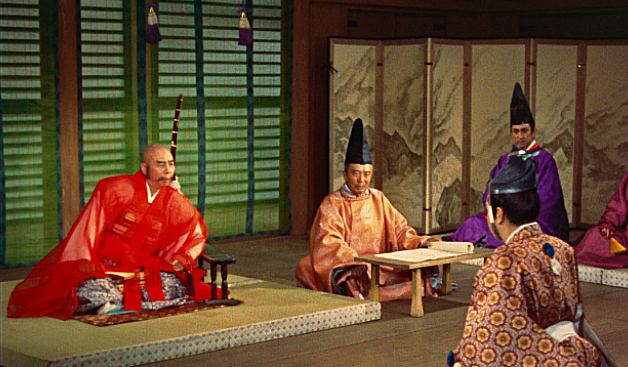I have not read The Loop, a novel by Joe Coomer that was named a New York Times Notable Book. I have seen the movie it was based on, though, and I can report that “A Bird of the Air” is not a notable film. For all its indie-pic quirkiness and the energies of its main female character—a free-spirited and somewhat flakey librarian with a basset hound—this film by director Margaret Whitton feels kind of average.
“A Bird of the Air” is the typical opposites-attract romantic comedy, but with one foot in the indie film tradition and the other planted in the world of screwball comedies. It’s “Bringing Up Baby” with a parrot instead of a leopard, but with indie quirkiness and pacing and a more introverted male lead than Cary Grant was ever asked to play.
Jackson Hurst is Lyman, a taciturn transportation department worker who patrols the highways during the night shift to report and deal with stranded motorists, accidents, road kill, washed-out bridges, drunks—you name it. He wears an orange jump suit and keeps to himself, so shy that when he strikes up a conversation it’s a major event.
We’re introduced to him by a female voiceover, whom we learn in the first scene is employed at a cafe that caters to the night-shift crowd. Curiously, though, Margie (Linda Emond) isn’t as important as, say, Nick Carraway in The Great Gatsby, and so we wonder why she’s telling Lyman’s story . . . especially when the film’s viewpoint is omniscient or restricted point-of-view. Most of it takes place outside the cafe and doesn’t even concern Margie, so the device feels artificial.
It takes awhile to get over the sense of deliberate artifice that the voiceover narrative presents, but soon we get into the characters, if not their situations. One day a green parrot flies into Lyman’s trailer and perches on the kitchen chair across from him. “Polly wanna cracker?” he says.
“Shut up,” the bird responds, then declares, “I’m an eagle.”
We don’t know Lyman well enough to figure out why he’d want to keep the bird rather than shoo it away, but he buys a cage for it and tries to read up on parrots. He says his intent is to find the original owner by such research and by piecing together “clues” obtained from the talking bird. But isn’t that a lot of expense and emotional investment, for someone who’s tacking up “Found: Parrot” notices all over town?
One day when Lyman is researching and tacking up those notices instead of sleeping, he meets librarian Fiona (Rachel Nichols, “Alias,” “Conan the Barbarian”), and so the day-shift gal and the night-shift guy have the chance encounter that leads to more. She says she’s interested in helping him with his quest, but it’s clear that, like every self-respecting screwball in a screwball comedy, she’s really after him.
But they both have their problems. They just display them differently. He was orphaned since workers found him on the side of the road when he was just four years old, and in indie fashion he has a quirk: he collects other people’s trophies bought at yard sales. Meanwhile, she has issues of her own that cause her to be so overtly flamboyant. And as one cop says, “Boy she can talk. My ears are still bleeding.”
The parrot adds more than color. The little guy quotes from the Bible and says things like “Prepare to meet your maker” as he takes the head off of a fake bird toy inside his cage. It’s when Fiona insists on helping him find the bird’s owner and the two hit the road together that this quirky romantic dramedy gets more interesting. It’s when the two characters start to spend time with each other that their somewhat one-dimensional characters (he’s shy, she’s talkative; he’s reclusive, she’s a free spirit) start to round out a bit more.
Unfortunately, the film itself never quite feeds off the quirkiness or the energy, and so it remains a pleasant but not a profound film. The bird may quote from Ecclesiastes (“That which has wings should tell the matter”), but when the main characters say things like “I like conversation; I think it’s as good as sex,” well, that’s about as clever as the dialogue gets. And when Fiona decides to accompany Lyman one night, the crisis that her ride-along provokes really seems a little overblown.
As for the positives, it’s impossible not to be at least a little charmed by a film that throws both a parrot and a basset hound at you, and Hurst and Nichols do a decent job with their roles. Both are familiar types, but as I said, when they start reacting to each other those types begin to break down nicely.
Video:
“A Bird of the Air” looks better than its budget, with natural-looking skin tones and colors and a modicum of grain. It’s presented in 1.78:1 aspect ratio.
Audio:
The sound is actually impressive for an indie flick: a Dolby Digital 5.1 Surround that involves the rear speakers more than you’d expect and channels the sound logically across the sound field.
Extras:
Whitton provides a full-length commentary in which she covers the usual bases: shooting on a tight budget, casting the main actors, working with animals, the special effects, etc. It’s average to better than average. Also included are cast and crew interviews and a behind-the-scenes look at filming.
Bottom line:
As indie films go, “A Bird of the Air” has its moments, but I can’t see myself beginning a conversation with, “Hey, I saw this really interesting indie film about a courtesy patrol worker and a librarian and the bird that kind of brings them together, and the dog that kind of . . . .” Well, I guess you had to be there.


